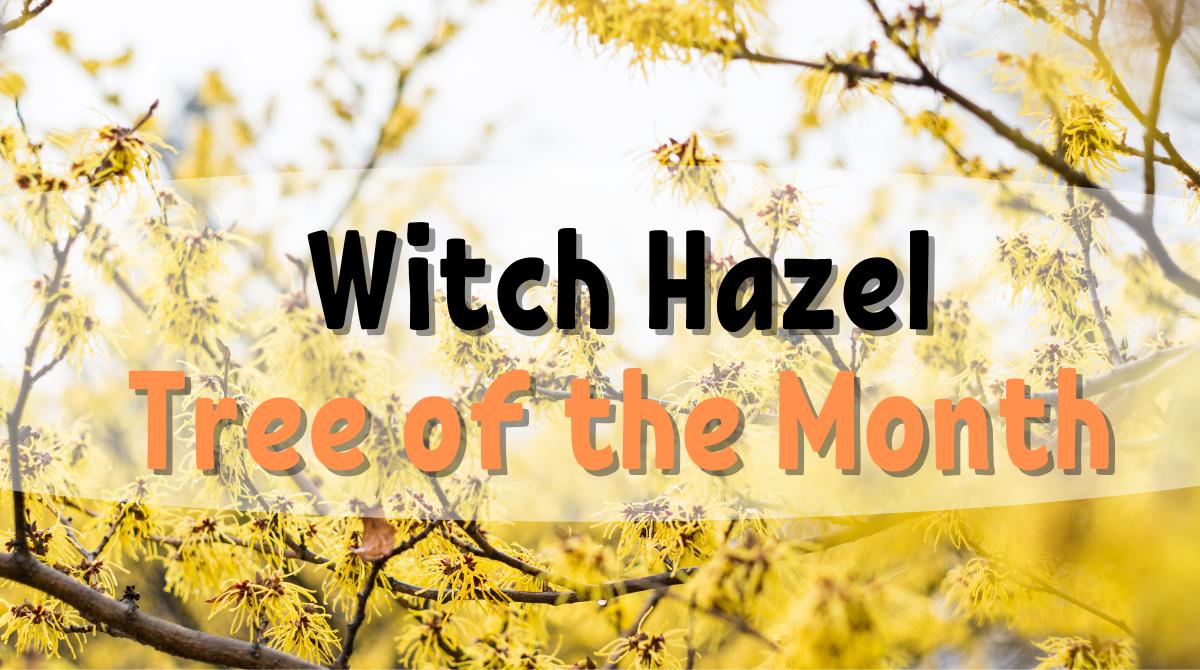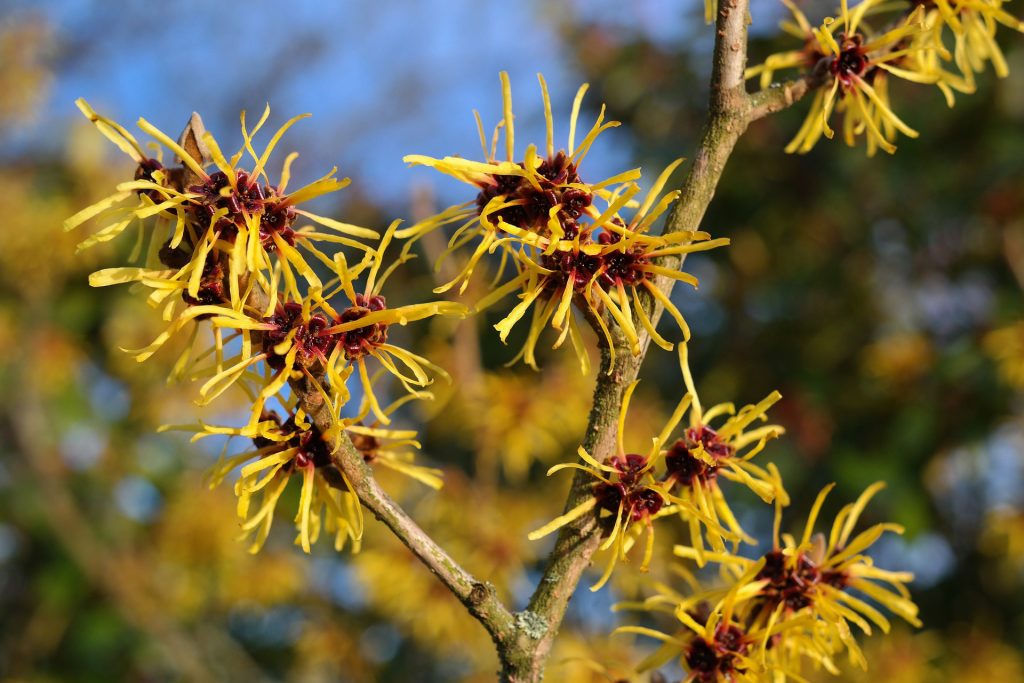Tree of October 2021: Witch Hazel

Selecting Healthy Trees Guide
9.23.21
Crape Myrtle Bark Scale
10.20.21
October Tree of the Month: Witch Hazel
It’s now officially spooky season, so of course we had to choose witch hazel as October’s tree of the month! What makes witch hazel so fitting for Halloween-month, you ask? Not only do these trees have odd, prickly yellow flowers, but their blooming time is unique as well. Witch hazel flowers bloom in fall, right around Halloween, giving them their witchy-name! Witch hazel is a great choice for a small, ornamental trees in any yard or patio.
Size at maturity
- Height 15-25 feet
- Spread 15-25 feet

Shape
- The witch hazel tree is arranged in a v-shape with thin leaf cover and turned branches.
Flower
- Witch hazel has fragrant flowers with a dark red center and scraggly thin yellow petals.
Fruit
- Witch hazel takes its time producing its fruit. Fruit will appear in the early-winter after blooming and hang on until the following fall when it drops. The fruit comes in the form of green seed capsules.
Sun
- Full to partial sun
Soil
- Witch hazel does best in well-drained, loamy, moist soils.
Natural Range
- Eastern United States
Use
- Witch hazel is a small, ornamental tree often used as specimen trees in yards, gardens, or nature areas.
- Witch hazel’s roots, stem, and twigs can be used for colds, indigestion, acne, and eczema.
Environmental/wildlife benefits
- Over 40 different bird species like to eat the Witch Hazels seed pods.
Fun fact
- Witch hazel bark is good for your skin! The extract from the bark can be combined with water and other essential oils to be used as a toner or to treat acne! You may have even seen witch hazel water in drugstores.



